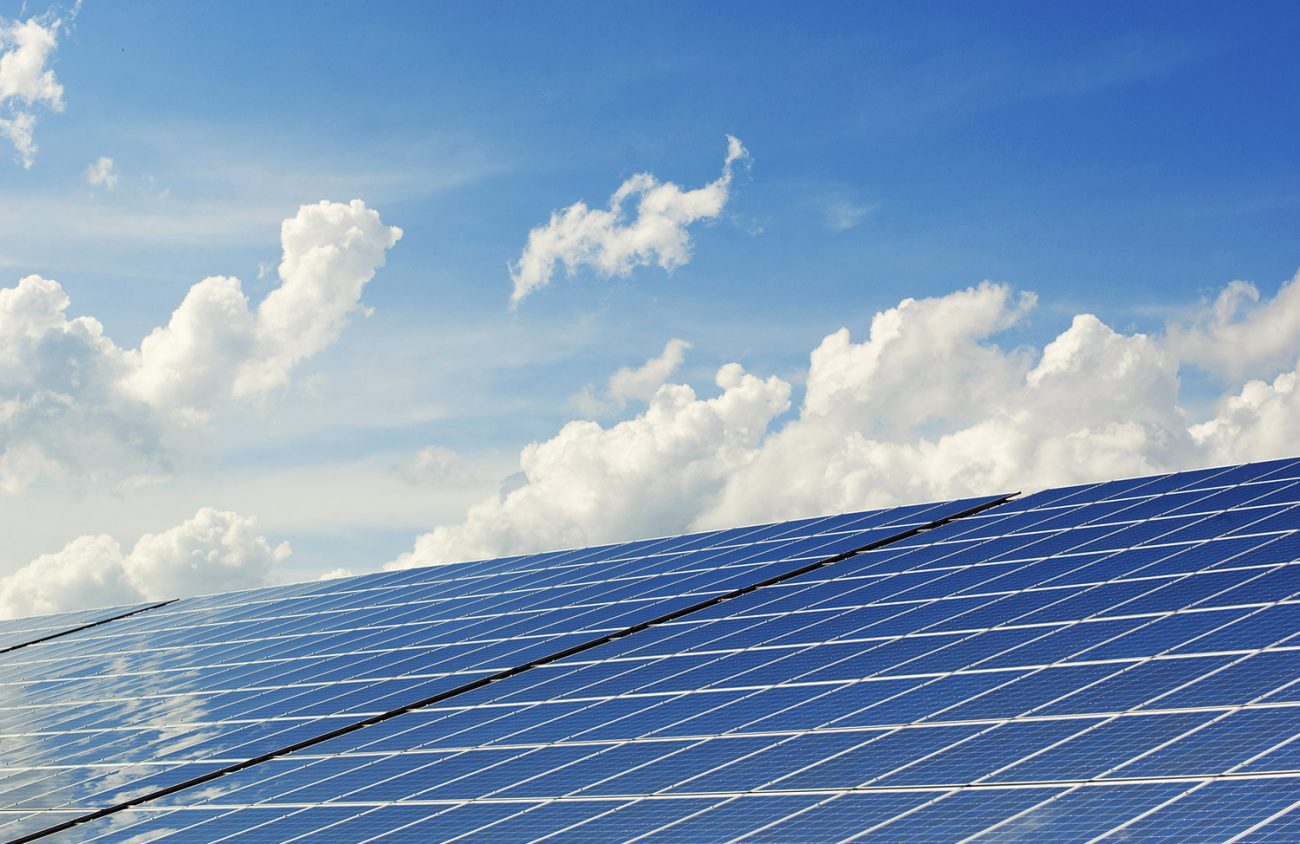It’s been more than six months since President Donald Trump slapped tariffs on imported solar cells and modules.
Some manufacturers, like Oregon’s SolarWorld Industries America, have applauded the tariffs. But the tariffs have been seen as an unneeded obstacle for other companies with clean energy projects in the state.
Grape Solar, a Eugene-based solar manufacturer and distributor, is one business that has seen the negative impact of Trump’s tariffs.
In an email to Eugene Weekly, Steve Bouton, a technical manager with Grape Solar, said imported products now cost more due to the tariffs. Chinese firms that manufacture solar cells and modules are experiencing three layers of tariffs, which were started in 2012 and recently added to by Trump.
SolarWorld Industries Americas was a co-petitioner in a case that led to Trump’s 30 percent tariffs on solar firms in China and the rest of the world that was announced on Jan. 22. Tim Brightbill was trade counsel for SolarWorld, an Oregon-based solar company.
He argues that Chinese firms can circumvent most of these tariffs if they export from a manufacturing plant in another country, like Vietnam.
And he says, “The tariffs have helped to stabilize the market and give U.S. manufacturers a chance to compete.” But a problem with the tariffs on imported solar cells and modules, Bouton says, is that the U.S. doesn’t have enough developed solar component supply chains, so Grape Solar will still have to rely on imported components, which are affected by the tariffs.
“This has significantly lowered solar energy’s competitiveness compared to traditional energy sources such as oil and gas, and unfortunately the majority of the energy market is still very much driven by price,” he says.
He adds that with threats from climate change, trade policy should aim to support clean energy.
According to Brightbill, despite the help from the tariffs for SolarWorld, “it’s still a difficult market due to China’s over-capacity and subsidies, which repeatedly forced prices downward.” But he says, thanks these tariffs, SolarWorld has been able to maintain manufacturing activity in Hillsboro.
Interestingly enough, only a few months after celebrating the tariffs, SolarWorld is now in the process of being purchased by California-based SunPower. Brightbill says he’s heard the plan is to move some of SunPower’s manufacturing from Mexico up to Hillsboro.
The tariffs can be understood under the concept of the “infant industrial” argument, Brightbill says. The U.S. solar industry needs protection to grow and compete with countries like China. The U.S. solar industry, however, has been active for quite some time considering that President Jimmy Carter installed solar panels on the White House in 1979.
On the other hand, protectionist policies hit smaller businesses the hardest, says Jon Miller, executive director of Oregon Solar Energy Industries Association (OSEIA). He says that’s because smaller companies have the least amount of buying power or ability to make deals with manufacturing companies.
“We have a lot of small installers around the state,” Miller says. “Unfortunately they get hit hardest.”
In addition to the tariffs on solar cells and modules, the Trump administration placed tariffs on steel and aluminum, which are used when installing solar projects. Bouton of Grape Solar says the company has seen an increase in the cost of solar panels assembled in the U.S.
The Solar Energy Industries Association says the Trump administration further punished China on Aug. 23 by implementing an increased 25 percent tariff on such items as steel, aluminum and certain batteries and products used in solar installments.
As of now, it’s unknown how much Trump’s tariffs have impacted sales because Oregon Department of Energy Residential Energy Tax Credit expired at the end of 2017, muddying the picture.
The Energy Trust of Oregon is a nonprofit that helps utility customers save energy and generate renewable power and one way it does this is through cash incentives. At the end of its second quarter, it saw 310 residential customers apply for solar incentives, a 40 percent decrease from 2017’s second quarter.
Miller says losing the tax credit has resulted in layoffs of about 10 percent of solar employees. The tax credit probably won’t come back, but he says he and the OSEIA are working with legislators to pass some sort of support to encourage installing solar projects.
The tariffs have resulted in a slight price increase for solar projects, says Kelli Hewitt, president of E2 Solar Inc. in Bend. Then again, some solar companies in Oregon also prepared for the tariffs by stockpiling materials.
Brightbill agrees, but he says he sees a strong future for U.S. solar demand that will translate to supporting domestic solar manufacturing.
“I think there was a lot of stockpiling and hoarding,” he says. “As that goes away, there will be more demand for U.S. products.”
Oregon was an early leader in solar deployment and at one time ranked ninth in solar-installed capacity, according to a 2017 report by OSEIA and The Green Energy Institute. The state has since dropped to 19th in the U.S.
Oregon is ranked high in manufacturing, which will be protected further with Trump’s tariffs. However, with the combination of losing the state solar tax credit and active tariffs on cheaper, imported solar components, the state’s ranking for solar capacity will most likely continue to dwindle.
